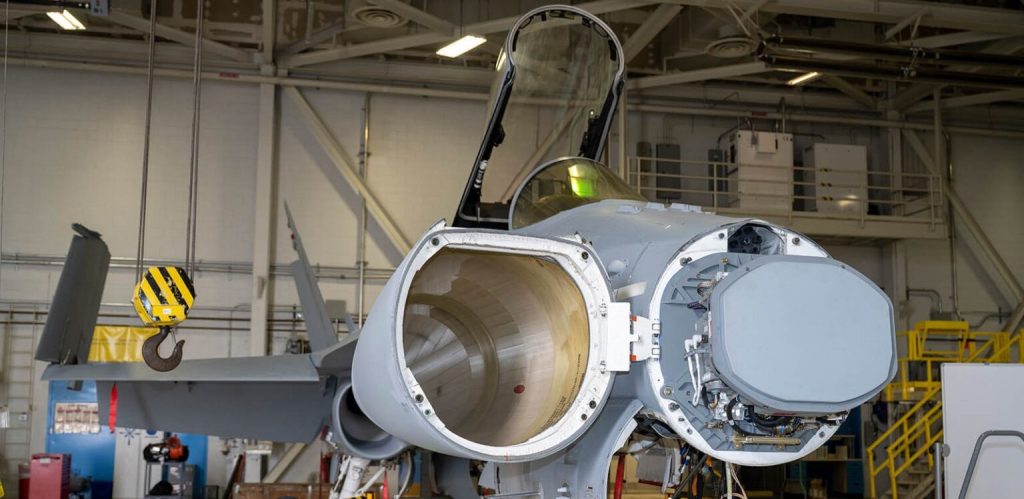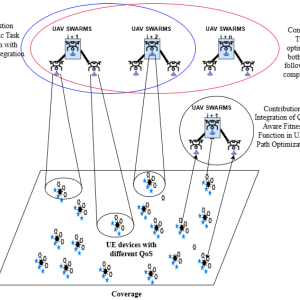In the ever-evolving landscape of defense and aerospace technology, groundbreaking advancements frequently emerge, reshaping the industry’s capabilities. One such transformative collaboration is underway, poised to redefine Gallium Nitride technology for enhanced radio frequency sensors. RTX and DARPA have joined forces, embarking on a mission to propel GaN technology to new heights, ultimately revolutionizing RF sensor performance.

Unveiling the Power of Gallium Nitride
Gallium Nitride has long been a focal point in the quest for superior electronic components. Its unique properties, including high electron mobility and thermal stability, make it a sought-after material for RF applications. The collaboration between RTX and DARPA aims to unlock the full potential of GaN, pushing the boundaries of what was once deemed possible.
Enhancing Radio Frequency Sensors
Radio frequency sensors play a pivotal role in modern defense systems, providing crucial data for situational awareness and communication. By leveraging the inherent advantages of GaN, RTX and DARPA seek to enhance the performance of RF sensors, ushering in a new era of precision and reliability.
The Collaborative Force: RTX and DARPA
RTX’s Expertise in Defense Technology
As a leading player in the defense industry, RTX brings a wealth of expertise to the table. Specializing in cutting-edge technology solutions, RTX has a proven track record of developing innovative systems that meet the stringent demands of the defense sector. Their commitment to excellence aligns seamlessly with DARPA’s pursuit of pushing technological boundaries.
DARPA’s Visionary Approach
DARPA, the Defense Advanced Research Projects Agency, is renowned for its visionary approach to technological innovation. With a mandate to ensure that the United States maintains a technological edge in defense capabilities, DARPA consistently invests in high-risk, high-reward projects. The collaboration with RTX exemplifies DARPA’s commitment to fostering advancements that can reshape the future of defense technology.
Key Objectives of the Collaboration
Optimizing GaN for Military Applications
The primary focus of the RTX and DARPA collaboration is to optimize GaN technology specifically for military applications. This involves tailoring the material’s properties to meet the demanding requirements of defense systems, ensuring unparalleled performance in the field.
Advancing RF Sensor Precision
A key objective is the advancement of RF sensor precision through the integration of GaN technology. This includes improving sensitivity, range, and signal clarity, ultimately providing military personnel with a more comprehensive and accurate understanding of their operational environments.
Anticipated Benefits for the Defense Sector
Improved Situational Awareness
By enhancing the capabilities of RF sensors, the collaboration aims to elevate situational awareness for military personnel. This translates to quicker and more informed decision-making on the battlefield, ultimately bolstering the effectiveness of defense operations.
Reduced Size and Weight of Electronic Systems
Optimizing GaN technology allows for the development of more compact and lightweight electronic systems. This not only contributes to the overall agility of military hardware but also facilitates the integration of advanced technology into platforms with limited space.
Overcoming Challenges in Gallium Nitride Technology
Addressing Thermal Management
One of the challenges in maximizing GaN’s potential lies in effective thermal management. RTX and DARPA are investing in research and development to overcome thermal hurdles, ensuring that the technology operates at peak efficiency even in demanding operational conditions.
Ensuring Scalability and Affordability
As with any technological advancement, scalability and affordability are paramount. The collaboration is dedicated to developing solutions that not only push the technological envelope but also remain feasible for widespread implementation across defense systems.
The Road Ahead: Innovation and Impact
In the realm of defense and aerospace, staying ahead of the curve is essential. The collaboration between RTX and DARPA signifies a commitment to innovation that goes beyond incremental improvements. It heralds a new era in Gallium Nitride technology, where advancements in RF sensors have the potential to redefine the landscape of military operations.
Implications for Future Defense Systems
The implications of this collaboration extend beyond the immediate advancements in GaN technology. The enhanced capabilities of RF sensors are poised to influence the design and functionality of future defense systems, setting the stage for a paradigm shift in how the military operates.
Conclusion: Paving the Way for Technological Excellence
In conclusion, the collaboration between RTX and DARPA represents a pivotal moment in the evolution of Gallium Nitride technology. As these industry leaders combine their expertise and resources, the defense sector can anticipate a wave of innovations that will not only elevate current capabilities but also shape the trajectory of future technological advancements. The journey towards revolutionizing GaN technology for improved RF sensors is underway, and its impact is poised to resonate across the defense and aerospace landscape for years to come.











